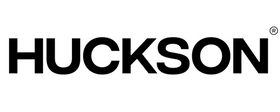Summer is over, autumn is here and winter is coming. The indoor training season is coming back in the safety of our homes or gyms and whilst we are safe riding our bikes on Zwift, we can focus more on staying hydrated, well nourished and start trying some nutrition strategies for the next triathlon season. Here are my tips for a healthy, well-nourished and hydrated session.
Blog Kindly contributed by Valentina De Pascale.

First, be prepared and independent:
We all know that if we start riding on Zwift, we would rather suffer with dehydration and pain than leave the session to get some more water or fuel and also, we can’t always rely on having someone who could bring us food and liquids in the middle of a session, therefore, prepare more water bottles and fuel to have next to you.

Hydration and fuel are very personal and depend on the intensity of the session, the rate of sweat, the body composition of the athlete and the level of humidity/heating of the room.
Keep the room ventilated with windows opened and/or a fan on full blast for hard sessions.
Keep on drinking, stay hydrated and remember that being thirsty is already a symptom of dehydration when exercising.
High intensity sessions need high G.I. fuel as they burn a higher rate of carbohydrates at a faster range, therefore eat a high G.I. snack before and during the activity.

It doesn’t have to be a gel or sports drink, it could be something like half a bagel with jam/honey, a flapjack, a ripe banana and so on.
The beautiful thing of indoor training is the possibility to incorporate more real food into the sessions and eat less processed sports nutrition products.
Save the gels and sports drinks for specific long/hard sessions to simulate race day and train the stomach to digest those products.
Low intensity sessions don’t call for high G.I. food as they keep the body in the low aerobic zone where a mixture of all the macros is burned, however it’s strongly recommended to eat a snack before the activity; something like a small slice of bread with a nut butter (almond, cashew, peanut) can really make the difference. Don’t go on an empty stomach unless you are following specific nutrition strategies in specific training blocks under the vigilance of an experienced Coach. Sport performance and weight loss are not related.

Indoor training makes us sweat more than we would normally do outside, hence why it is sensible to supplement your hydration with more electrolytes. Again, it doesn’t have to be a proper supplement/pill, it could simply be a banana, an orange, a grapefruit, other fruit and some nuts. All the food just mentioned contain different varieties of minerals and vitamins that can all replenish that micronutrient balance we need to stay healthy and fit.
To conclude, this is what I would do on a typical 60 min high intensity session consisting of intervals:
Pre session snack: half a bagel with honey, water (high GI)
During: a large ripe banana after 30 minutes, sip water every 5 minutes (high GI and minerals)
After: a bowl of Icelandic yogurt with cashews and berries (protein, carbs, good fats and micronutrients)

Have a safe, fun and well-nourished indoor season! Ride on!
---------------
Thanks Valentina. Please follow Valentina for more training tips, insight and nutrition advice here: @fuellingendurance








Leave a comment